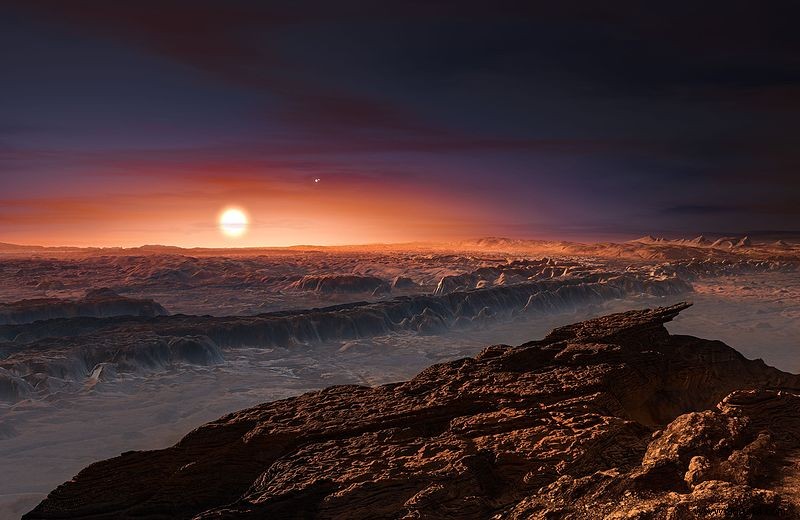A recent weather report from our closest stellar neighbor, Proxima Centauri, suggests that life probably has no chance of developing around it.
Located only 4.2 light years away, Proxima Centauri is the closest star to the Sun. About four years ago, a team of astronomers from the European Southern Observatory announced the discovery of a planet in orbit around this star, since named Proxima Centauri b. A few months ago, researchers also mentioned the possible presence of a second planet around this star. However, additional studies will be necessary to confirm this (or not).
That said, this planetary system is of interest to the scientific community for the simple and good reason that Proxima Centauri b evolves in the so-called "habitable" zone of Proxima Centauri . Thus, since its discovery, several studies have been carried out with the aim of determining whether or not this world could shelter one or more oceans, in particular. Nevertheless, it is also worth paying attention to its star.
Proxima Centauri indeed has nothing to do with the Sun. And for good reason:it's a red dwarf. These stars, very represented in the Galaxy (about 70% of the workforce), are smaller and cooler than ours. This means that their habitable area is closer from the stellar center, much closer than Mercury is to the Sun.
Another important point:some of these red dwarfs are known to be very unstable , regularly projecting stellar flares in their surroundings. In other words, the fact of evolving in their habitable zone does not guarantee that life can one day appear there, and even less develop there.
So the question is:Is Proxima Centauri a "quiet" or unstable red dwarf? Unfortunately, you may not like the answer.

In 2017, a team of astronomers had already detected a gigantic stellar flare on the surface of the star. An eruption so powerful that if life was indeed present on Proxima b, it had probably just disappeared.
In a new study, researchers have isolated Type IV radio bursts around Proxima Centauri for the first time. However, on Earth, these events occur following coronal mass ejections , much more violent than "simple" solar flares. In other words, there is a good chance that Proxima Centauri could also release these ejections, in which large amounts of ionized plasma and electromagnetic radiation are projected into space.
“ Our own Sun regularly emits hot clouds of ionized particles (coronal mass ejections). However, since this one is much hotter than Proxima Centauri and other red dwarf stars, our "habitable zone" is far from its surface, so Earth is relatively safe from these events » , explains Mr. Zic, lead author of the study. "In addition, our planet offers a very powerful magnetic field able to shield us from these intense plasma blasts .
This research, on the contrary, shows that the planet or planets around Proxima Centauri can thus undergo strong atmospheric erosion , exposing them to very strong X-rays and UV rays. Also according to the astronomer, it seems likely that the most common stars in the galaxy – the red dwarfs – are definitely not good places for life as we know it to develop properly.
You will find the details of the study in The Astrophysical Journal.